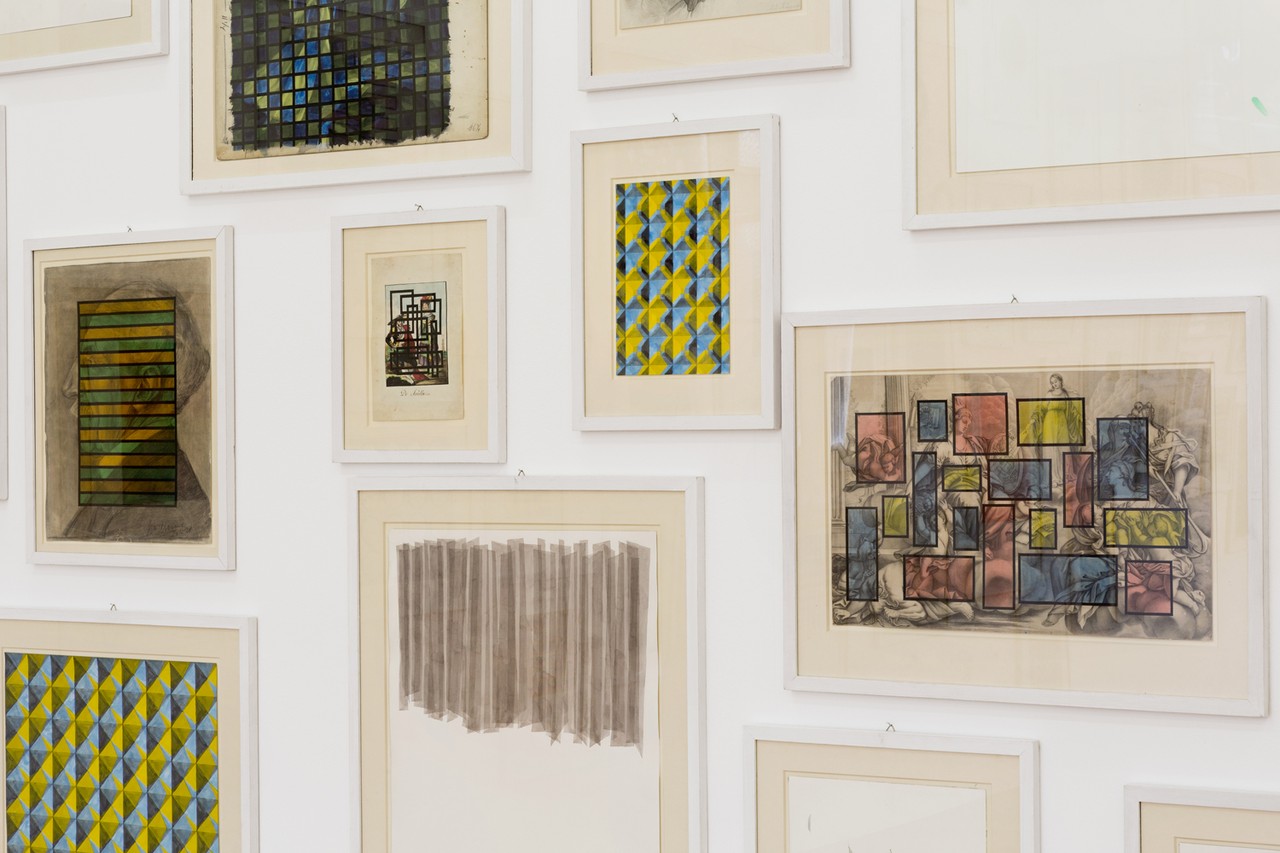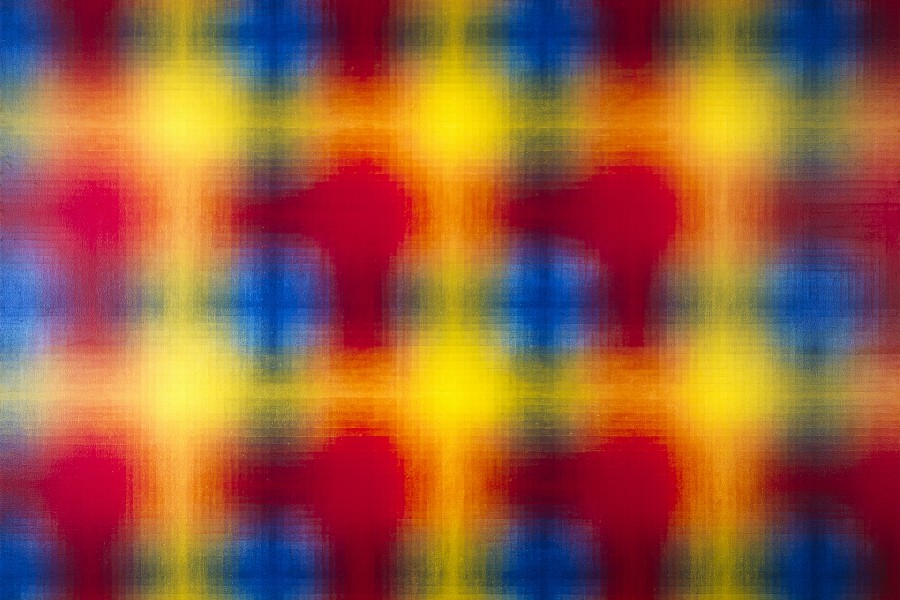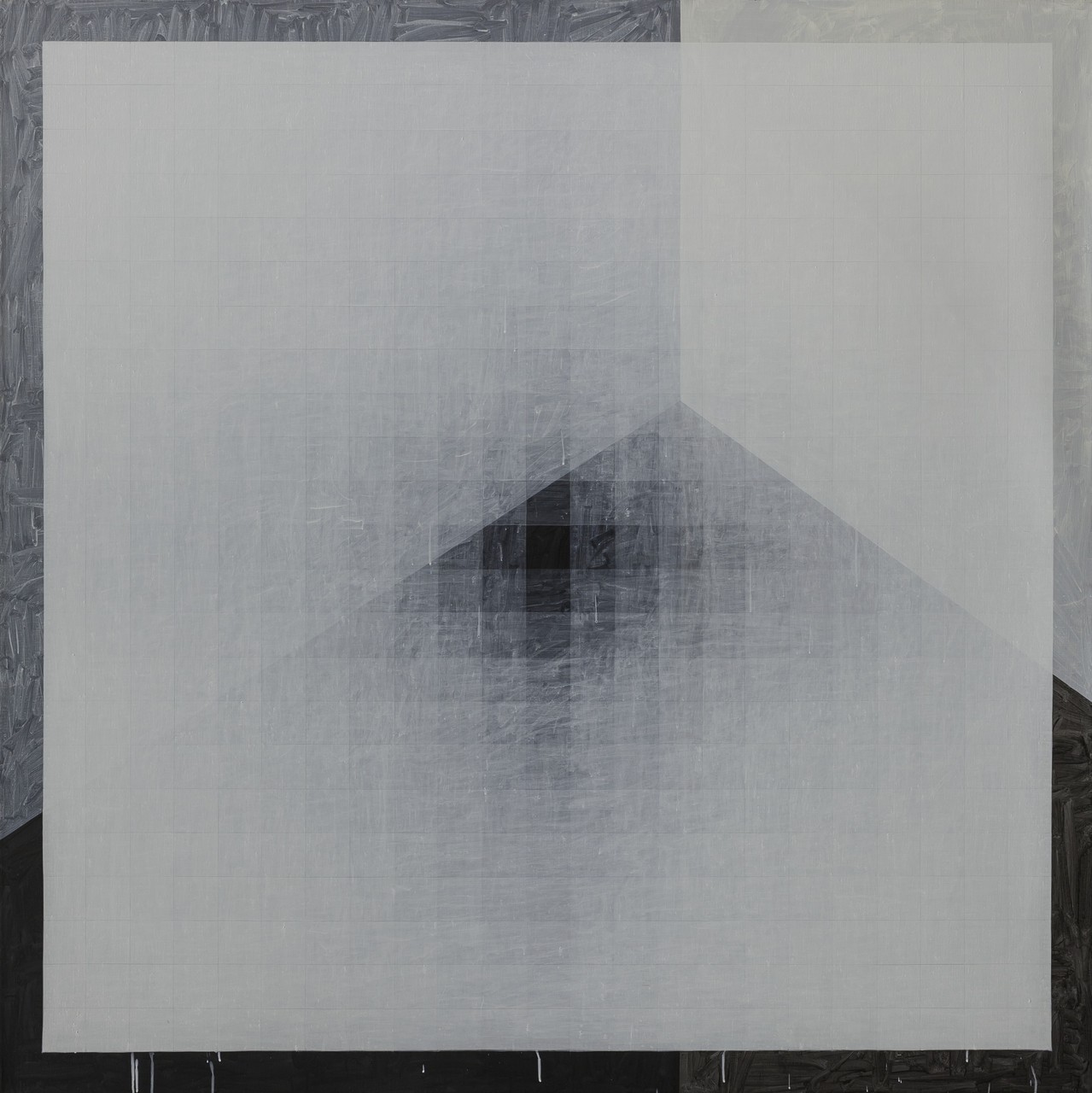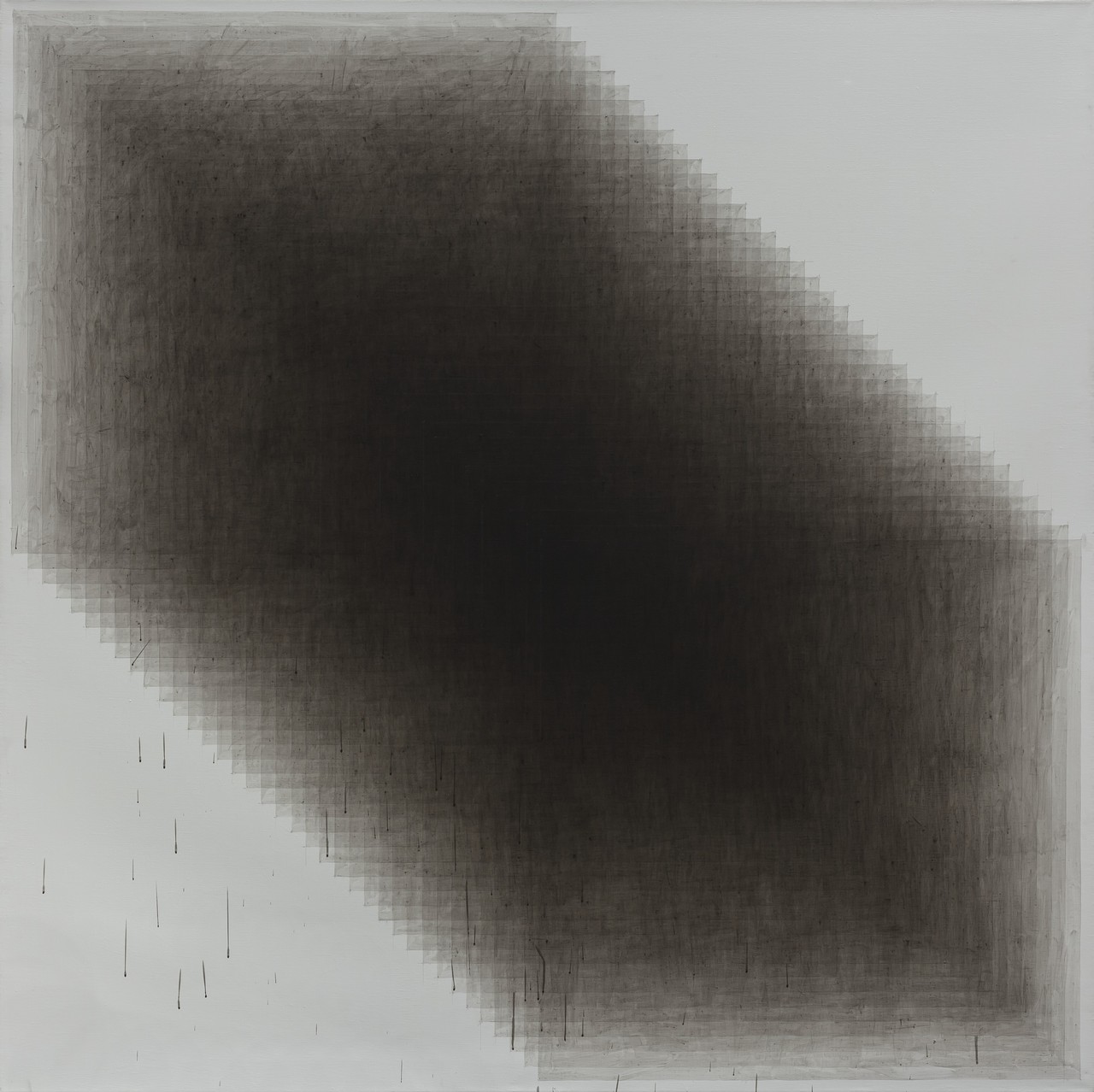Peter Schuyff
Has Been
11 Feb - 04 Jun 2017
PETER SCHUYFF
Has Been
11 February - 4 June 2017
Curator(s): Balthazar Lovay
Has Been presents a selection of works produced between 1981 and 1991 by Dutch painter Peter Schuyff, who was born in Baarn, Netherlands, 1958. This solo exhibition, organised jointly by Fri Art, the contemporary art centre in Fribourg and Le Consortium, in Dijon, presents work produced by the painter in New York in the 1980s and is the very first retrospective of his early career. The exhibition focuses on three different groups of works: acrylics on “biomorphic” canvases, typical of his early work (1982 – 1984), an important selection of abstract compositions (1984-1988) also on acrylic, and a large group of works on paper spanning an entire decade (1981-1991).
While these groups may not appear to have anything in common, they all have a role to play in the multiple histories of abstraction. Although this particular artistic vocabulary appeared to be exhausted in the 1980s, Schuyff, among other artists of the time, brought it back to life and re-appropriated its visual codes. He combined this takeover with classical, pre-Modern painting techniques and the creation of the illusion of light. He has thus created compositions that captivate as much by their visual impact as by the complexity of their referential relationships.
Several works in the main room on the Ground Floor comprise geometric grids with colour gradients and chiaroscuro succeeding each other. At one and the same time, the grid highlights the flatness of the canvas and gives the pattern intense optical depth. The construction lines in grey pencil and the splashes of paint that the artist leaves exposed allow him to demystify the use of classical techniques of illusionism by appointing up the flatness of the surface of the painting and its constituents (canvas, paint, surface). The particular 3 strength of Schuyff’s works resides in the visual resolution of these contradictions (illusion of depth versus flatness of the canvas).
Furthermore, his artistic expertise is particularly in evidence in the way he handles geometric surfaces and in his acrylics, which combine neo-surrealism with abstract images, and can be seen on the First Floor. Here it is not so much the rigidity of the grid but the exaggeration, almost ad absurdum, of abstract phenomena through the choice of colours and biomorphic shapes reminiscent of late surrealism, which provide the visual attraction and reveal the painter’s subtle sense of humour. This humour is a counterpoint to pure geometric rigour. It can also be perceived in his works – which can be viewed in the annex of the main gallery on the Ground Floor – composed of imprecise, ghostly rectangles, barely sketched on a minimalist background in poorly pigmented colours. This playing around with the physical possibilities of colour, through transparency or density, can be traced right throughout his work.
The First Floor also contains a group of 84 works on paper, produced between 1981 and 1991, and exhibited in its entirety (200 items) at the Sperone Westwater Gallery in New York in February 1992. These works include the easily recognisable illusionist series of gouache on found drawings. These works show the artist’s development in a considerably more complex and multiple light. The trompe-l’œil effect expands here to become actual plasticity and creates boundaries between abstract and figurative art. By painting on original drawings found in flea markets, Schuyff takes a fresh look at the pictorial space of the works and raises new questions about the value and physical nature of these compositions.
Schuyff’s work does not clearly fit into a particular style or movement, and yet his artistic development is closely linked to the 1980s New York scene. These different groups of works which were produced over this exceptional decade, when Manhattan was in a period of intense artistic ferment and where, in the space of a very few years, a dynamic artistic scene grew up in East Village, a district which set itself up as an alternative to the Reaganite ideals of urban American society. While there were very few galleries and art spaces in East Village in 1981-1982, just five years later there were over one hundred.
This decade was marked by a plurality of styles. One movement drove out the next (NeoSurrealism, Neo-Geo, Neo-Expressionism, Appropriation, etc.), they overlapped each other, contradicted each other and were lauded or criticised by turns. The artistic movements of the 4 time were much like an ideological minefield for young artists, and particularly painters. While conservative artistic circles and the market welcomed the return of modernist painting (via, for example, Neo-Expressionism and the Transavantgarde), others, under the influence of post-modernist theories, feminism and French poststructuralist writings, reproach this movement for not being sufficiently critical and for being too commercial. Schuyff’s work distances itself in a particular way from the seriousness of these discussions and from ideological battles. In a way, it is expressly linked to the history of painting as a specific medium.
Today, thirty years later, although the ardour of these debates has waned somewhat, when we look back at this period we can re-evaluate this history in a whole new light. The medium of painting is perpetually brought into question and attempts are constantly made to circumscribe and map this field (see recent exhibitions such as “Painting 2.0: Expression in the Information Age”, Museum Brandhorst, Munich, 14 November 2015 - 30 April 2016 and “Fast Forward, Painting from the 80s”, Whitney Museum, New York, 27 January – 14 May 2017). Notwithstanding, Schuyff’s approach to painting is all the more contemporary as it is alternative and stands both as an argument for and a counterargument to these debates both past and present.
From 1983, Peter Schuyff was represented by the Pat Hearn Gallery in New York. In 1987, he was exhibited for the first time in Switzerland in Geneva at the Centre d’art contemporain (CAC), and in Germany at the Galerie Paul Maenz in Cologne. In the 1990s, he was exhibited at venues including the Gian Enzo Sperone Gallery in Rome, at Sperone Westwater and at the Tony Shafrazi Gallery in New York. He is currently represented by the
following galleries: Sorry We're Closed in Brussels; Galerie Gabriel Rolt, in Amsterdam, Mary Boone Gallery, in New York, Galerie Karl Pfefferle, in Munich and Studio Raffaelli, in Trento.
Has Been
11 February - 4 June 2017
Curator(s): Balthazar Lovay
Has Been presents a selection of works produced between 1981 and 1991 by Dutch painter Peter Schuyff, who was born in Baarn, Netherlands, 1958. This solo exhibition, organised jointly by Fri Art, the contemporary art centre in Fribourg and Le Consortium, in Dijon, presents work produced by the painter in New York in the 1980s and is the very first retrospective of his early career. The exhibition focuses on three different groups of works: acrylics on “biomorphic” canvases, typical of his early work (1982 – 1984), an important selection of abstract compositions (1984-1988) also on acrylic, and a large group of works on paper spanning an entire decade (1981-1991).
While these groups may not appear to have anything in common, they all have a role to play in the multiple histories of abstraction. Although this particular artistic vocabulary appeared to be exhausted in the 1980s, Schuyff, among other artists of the time, brought it back to life and re-appropriated its visual codes. He combined this takeover with classical, pre-Modern painting techniques and the creation of the illusion of light. He has thus created compositions that captivate as much by their visual impact as by the complexity of their referential relationships.
Several works in the main room on the Ground Floor comprise geometric grids with colour gradients and chiaroscuro succeeding each other. At one and the same time, the grid highlights the flatness of the canvas and gives the pattern intense optical depth. The construction lines in grey pencil and the splashes of paint that the artist leaves exposed allow him to demystify the use of classical techniques of illusionism by appointing up the flatness of the surface of the painting and its constituents (canvas, paint, surface). The particular 3 strength of Schuyff’s works resides in the visual resolution of these contradictions (illusion of depth versus flatness of the canvas).
Furthermore, his artistic expertise is particularly in evidence in the way he handles geometric surfaces and in his acrylics, which combine neo-surrealism with abstract images, and can be seen on the First Floor. Here it is not so much the rigidity of the grid but the exaggeration, almost ad absurdum, of abstract phenomena through the choice of colours and biomorphic shapes reminiscent of late surrealism, which provide the visual attraction and reveal the painter’s subtle sense of humour. This humour is a counterpoint to pure geometric rigour. It can also be perceived in his works – which can be viewed in the annex of the main gallery on the Ground Floor – composed of imprecise, ghostly rectangles, barely sketched on a minimalist background in poorly pigmented colours. This playing around with the physical possibilities of colour, through transparency or density, can be traced right throughout his work.
The First Floor also contains a group of 84 works on paper, produced between 1981 and 1991, and exhibited in its entirety (200 items) at the Sperone Westwater Gallery in New York in February 1992. These works include the easily recognisable illusionist series of gouache on found drawings. These works show the artist’s development in a considerably more complex and multiple light. The trompe-l’œil effect expands here to become actual plasticity and creates boundaries between abstract and figurative art. By painting on original drawings found in flea markets, Schuyff takes a fresh look at the pictorial space of the works and raises new questions about the value and physical nature of these compositions.
Schuyff’s work does not clearly fit into a particular style or movement, and yet his artistic development is closely linked to the 1980s New York scene. These different groups of works which were produced over this exceptional decade, when Manhattan was in a period of intense artistic ferment and where, in the space of a very few years, a dynamic artistic scene grew up in East Village, a district which set itself up as an alternative to the Reaganite ideals of urban American society. While there were very few galleries and art spaces in East Village in 1981-1982, just five years later there were over one hundred.
This decade was marked by a plurality of styles. One movement drove out the next (NeoSurrealism, Neo-Geo, Neo-Expressionism, Appropriation, etc.), they overlapped each other, contradicted each other and were lauded or criticised by turns. The artistic movements of the 4 time were much like an ideological minefield for young artists, and particularly painters. While conservative artistic circles and the market welcomed the return of modernist painting (via, for example, Neo-Expressionism and the Transavantgarde), others, under the influence of post-modernist theories, feminism and French poststructuralist writings, reproach this movement for not being sufficiently critical and for being too commercial. Schuyff’s work distances itself in a particular way from the seriousness of these discussions and from ideological battles. In a way, it is expressly linked to the history of painting as a specific medium.
Today, thirty years later, although the ardour of these debates has waned somewhat, when we look back at this period we can re-evaluate this history in a whole new light. The medium of painting is perpetually brought into question and attempts are constantly made to circumscribe and map this field (see recent exhibitions such as “Painting 2.0: Expression in the Information Age”, Museum Brandhorst, Munich, 14 November 2015 - 30 April 2016 and “Fast Forward, Painting from the 80s”, Whitney Museum, New York, 27 January – 14 May 2017). Notwithstanding, Schuyff’s approach to painting is all the more contemporary as it is alternative and stands both as an argument for and a counterargument to these debates both past and present.
From 1983, Peter Schuyff was represented by the Pat Hearn Gallery in New York. In 1987, he was exhibited for the first time in Switzerland in Geneva at the Centre d’art contemporain (CAC), and in Germany at the Galerie Paul Maenz in Cologne. In the 1990s, he was exhibited at venues including the Gian Enzo Sperone Gallery in Rome, at Sperone Westwater and at the Tony Shafrazi Gallery in New York. He is currently represented by the
following galleries: Sorry We're Closed in Brussels; Galerie Gabriel Rolt, in Amsterdam, Mary Boone Gallery, in New York, Galerie Karl Pfefferle, in Munich and Studio Raffaelli, in Trento.




